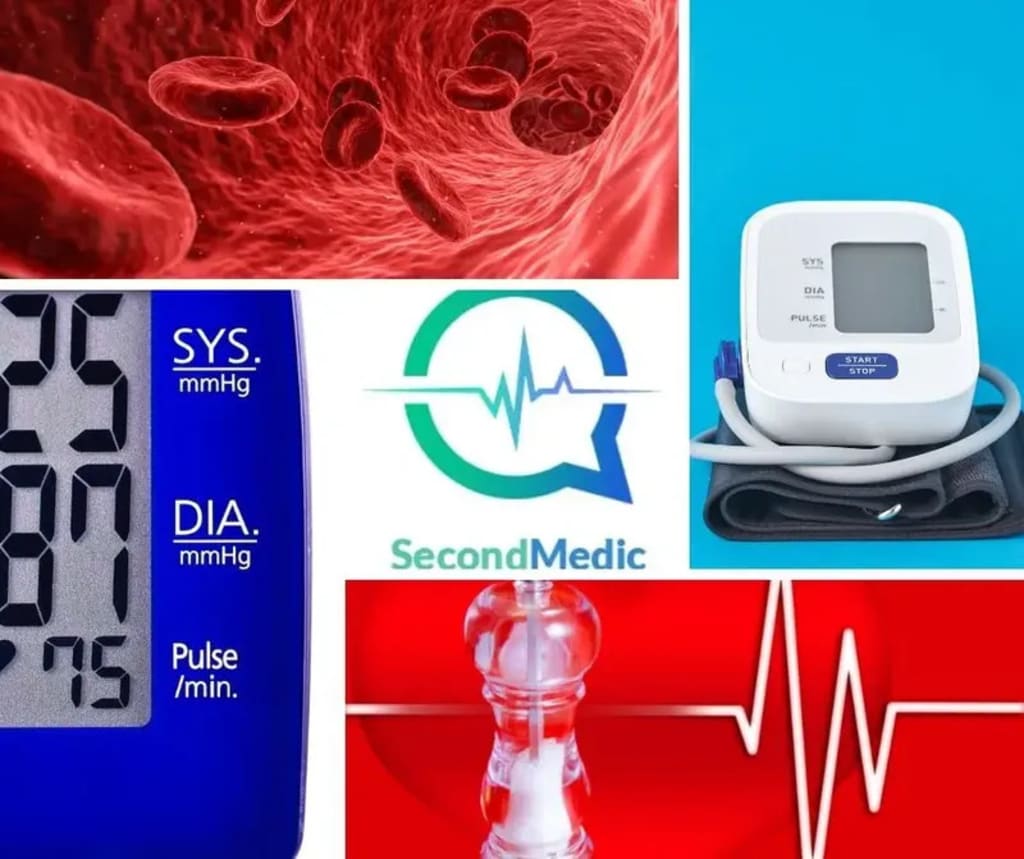Understanding Hypotension: What is Low Blood Pressure?
Low BP

Understanding Hypotension: What is Low Blood Pressure?
Blood pressure is the force of blood pushing against the walls of your arteries as your heart pumps blood throughout your body. It is measured in millimetres of mercury (mm Hg) and has two numbers: systolic and diastolic. The systolic number is the pressure when your heart beats and the diastolic number is the pressure when your heart rests between beats.
Normal blood pressure is usually around 120/80 mm Hg, but it can vary depending on factors such as age, activity level, stress, and medications. Low blood pressure, also known as hypotension, is generally considered a blood pressure reading lower than 90 mm Hg for the top number or 60 mm Hg for the bottom number.
Low blood pressure might not cause any noticeable symptoms, or it might cause dizziness, fainting, fatigue, nausea, or blurred vision. Sometimes, low blood pressure can be a sign of an underlying health condition, especially when it drops suddenly or occurs with other symptoms. In some cases, low blood pressure can be life-threatening, leading to a condition called shock.
What causes low blood pressure?
There are many possible causes of low blood pressure, ranging from dehydration to serious medical conditions. Some of the common causes include:
Dehydration: Losing too much fluid from vomiting, diarrhoea, sweating, or fever can lower blood volume and blood pressure.
Medications: Some drugs that lower blood pressure include diuretics, beta-blockers, alpha-blockers, calcium channel blockers, nitrates, and some antidepressants. Other drugs that can cause low blood pressure include erectile dysfunction drugs, alcohol, narcotics, and some allergy medicines.
Heart problems: Conditions that affect the heart's ability to pump blood effectively, such as heart failure, heart attack, bradycardia (slow heart rate), or heart valve problems can cause low blood pressure.
Endocrine problems: Hormonal disorders that affect the production or regulation of hormones that control blood pressure, such as diabetes, hypothyroidism (low thyroid function), hyperthyroidism (high thyroid function), adrenal insufficiency (Addison's disease), or pheochromocytoma (a rare tumour that secretes adrenaline) can cause low blood pressure.
Infections: Severe infections that enter the bloodstream (sepsis) or affect the nervous system (meningitis) can cause a drop in blood pressure due to inflammation and vasodilation (widening of blood vessels).
Allergic reactions: A severe allergic reaction (anaphylaxis) to a food, drug, insect sting, or other substance can cause a sudden and dangerous drop in blood pressure due to histamine release and vasodilation.
Blood loss: Losing a large amount of blood from trauma, surgery, or internal bleeding can reduce blood volume and blood pressure.
Pregnancy: Blood pressure tends to decrease during pregnancy due to hormonal changes and increased blood flow to the placenta.
Nutritional deficiencies: Lack of certain vitamins or minerals that are essential for maintaining normal blood pressure, such as vitamin B12, folate, or iron can cause low blood pressure.
How is low blood pressure diagnosed?
To diagnose low blood pressure, your healthcare provider will do a physical exam and ask questions about your medical history. The exam includes measuring your blood pressure using a device called a sphygmomanometer which consists of a cuff that wraps around your arm and a gauge that shows the pressure readings.
Your healthcare provider may also order some tests to determine the cause of your low blood pressure. Some of these tests include:
Blood tests: These can help diagnose low or high blood sugar levels, anaemia (low red blood cell count), or other abnormalities that can affect blood pressure.
Electrocardiogram (ECG or EKG): This is a quick and painless test that measures the electrical activity of your heart using sensors attached to your chest and sometimes your arms or legs. It can show how fast or slow your heart is beating and if you have had or are having a heart attack.
Tilt table test: This is a test that evaluates how your body reacts to changes in position. It involves lying on a table that is tilted to raise the upper part of your body while your heart rate and blood pressure are monitored. It can help diagnose orthostatic hypotension (a drop in blood pressure when standing up) or neurally mediated hypotension (a drop in blood pressure after standing for long periods).
How is low blood pressure treated?
Low blood pressure without symptoms or with only mild symptoms rarely requires treatment. If low blood pressure is causing symptoms or complications, some general measures to treat low blood pressure are:
Drink plenty of fluids to avoid dehydration and increase blood volume.
Eat small, frequent meals to prevent a drop in blood pressure after eating.
Avoid alcohol and caffeine as they can lower blood pressure further.
Wear compression stockings to improve blood circulation in the legs.
Elevate the head of the bed or use pillows to prevent blood from pooling in the lower body when lying down.
Stand up slowly and carefully to avoid sudden drops in blood pressure when changing positions.
Some medications that can raise blood pressure are fludrocortisone, midodrine, and pyridostigmine. These drugs should only be taken under medical supervision and with regular monitoring of blood pressure and electrolytes.
In some cases, low blood pressure may require emergency treatment with intravenous fluids, blood transfusions, or vasopressors to restore normal blood pressure and prevent organ damage.





Comments
There are no comments for this story
Be the first to respond and start the conversation.